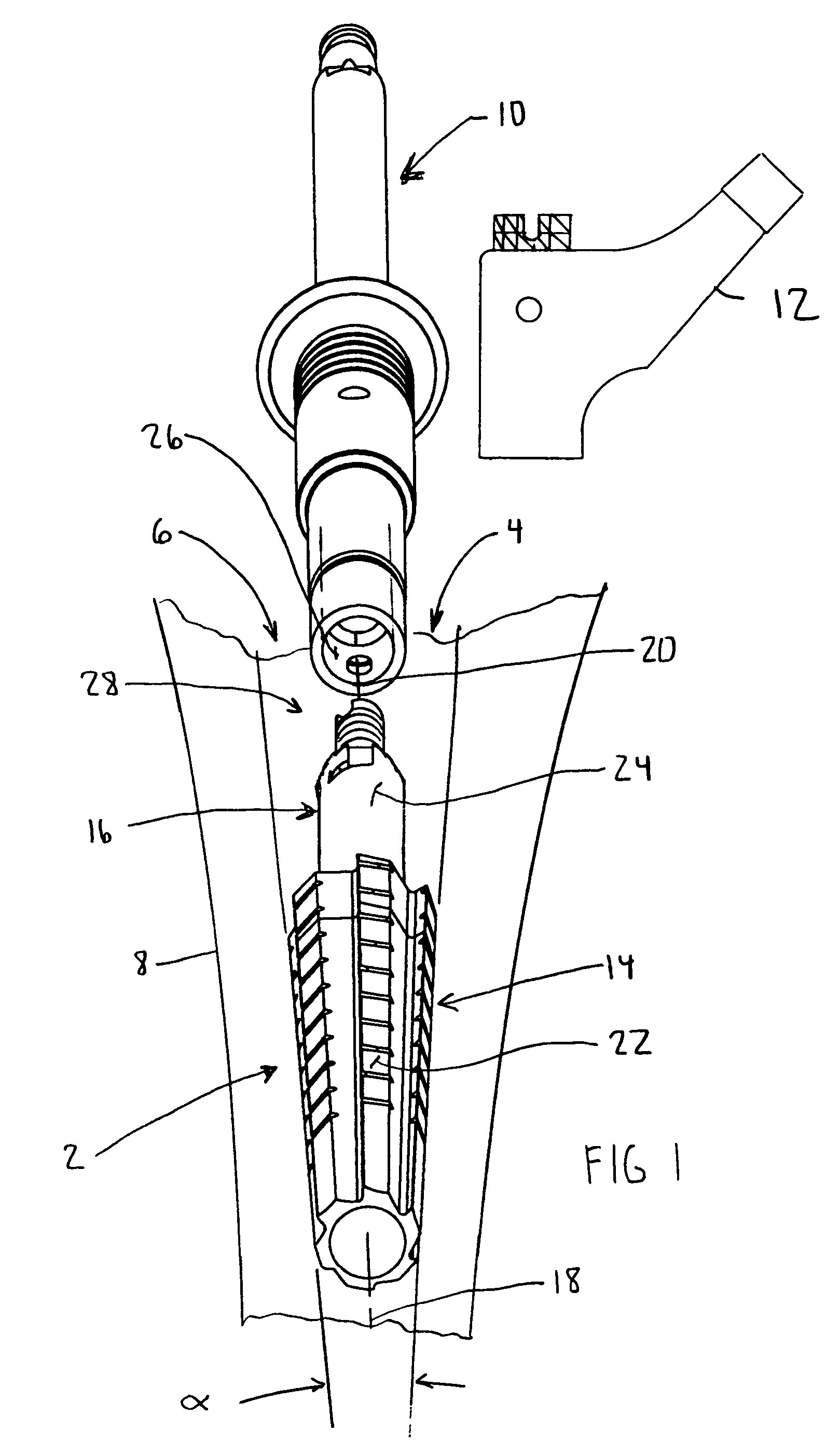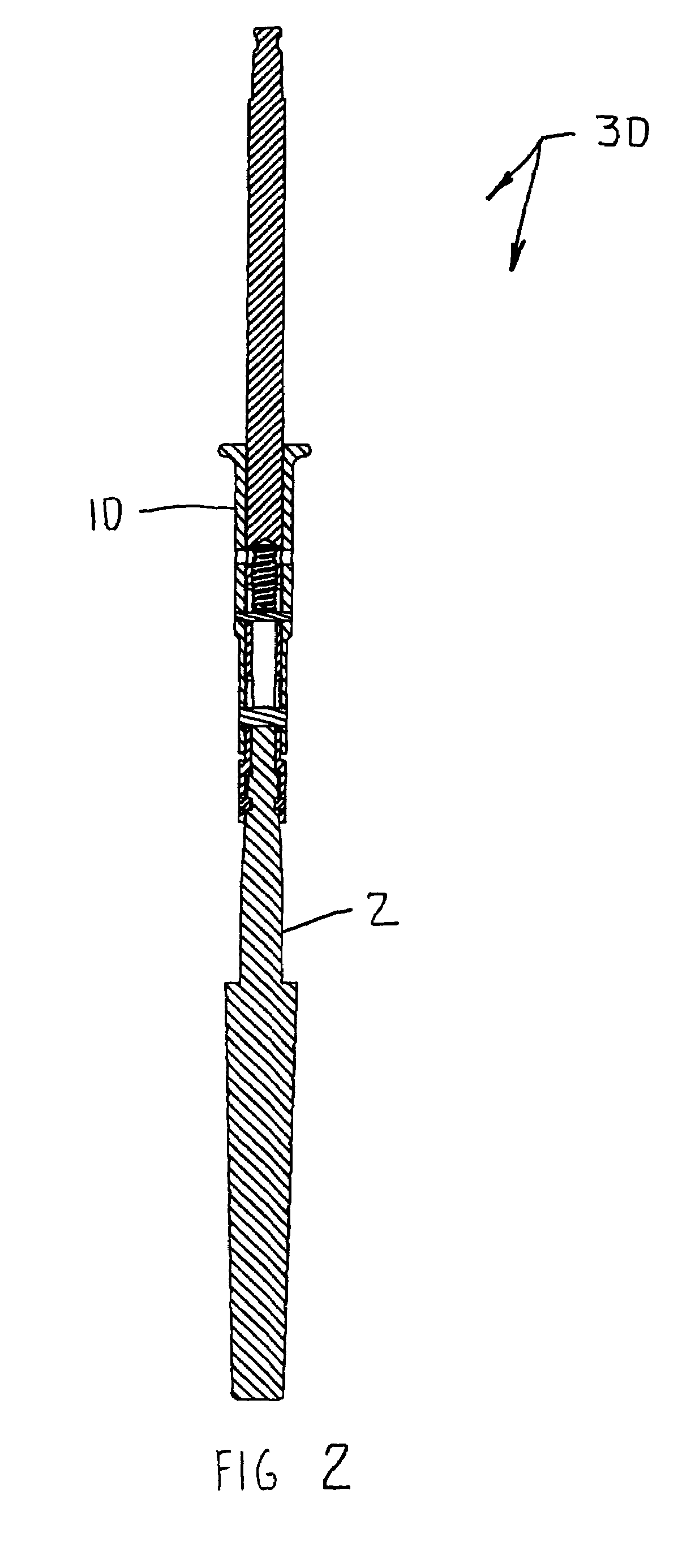Modular tapered reamer for bone preparation and associated method
a bone preparation and reamer technology, applied in the field of orthopaedics, can solve the problems of inability to stabilize the joint, difficult to achieve the effect of ensuring the stability of the joint, and difficulty in adjusting the position of the soft tissue, so as to improve the positioning of the prosthesis and optimize the soft tissue position
- Summary
- Abstract
- Description
- Claims
- Application Information
AI Technical Summary
Benefits of technology
Problems solved by technology
Method used
Image
Examples
Embodiment Construction
[0068]Embodiments of the present invention and the advantages thereof are best understood by referring to the following descriptions and drawings, wherein like numerals are used for like and corresponding parts of the drawings.
[0069]Referring now to FIG. 1, a reamer 2 according to the present invention is shown. The reamer 2 is utilized for preparing a cavity 4 in the intramedullary canal 6 of a long bone 8 with the use of a driver 10. The reamer 2 cooperates with an implant trial 12 to assist in performing a trial reduction. The reamer 2 includes a first portion 14 for preparation of the cavity 4 in the canal 6. The first portion 14 is adapted for placement at least partially in the cavity 4 of the long bone 8. The reamer 2 further includes a second portion 16 operably connected to the first portion 14. The second portion 16 is also connectable to the driver 10 to rotate the reamer 2. The reamer 2 is removably attachable to the trial 12 and to the driver 10.
[0070]As shown in FIG. 1...
PUM
 Login to View More
Login to View More Abstract
Description
Claims
Application Information
 Login to View More
Login to View More - R&D
- Intellectual Property
- Life Sciences
- Materials
- Tech Scout
- Unparalleled Data Quality
- Higher Quality Content
- 60% Fewer Hallucinations
Browse by: Latest US Patents, China's latest patents, Technical Efficacy Thesaurus, Application Domain, Technology Topic, Popular Technical Reports.
© 2025 PatSnap. All rights reserved.Legal|Privacy policy|Modern Slavery Act Transparency Statement|Sitemap|About US| Contact US: help@patsnap.com



